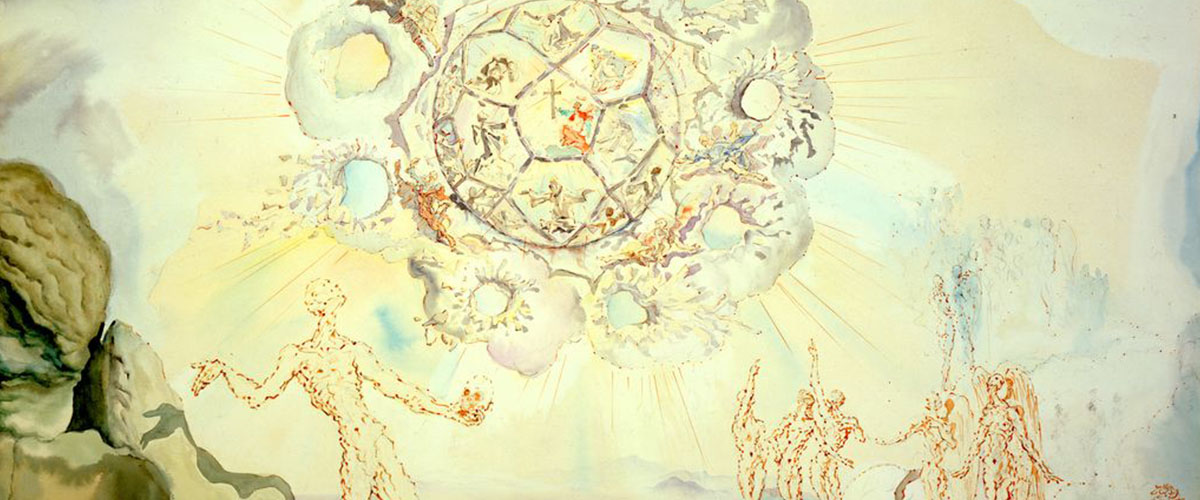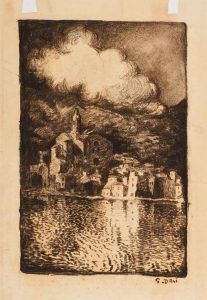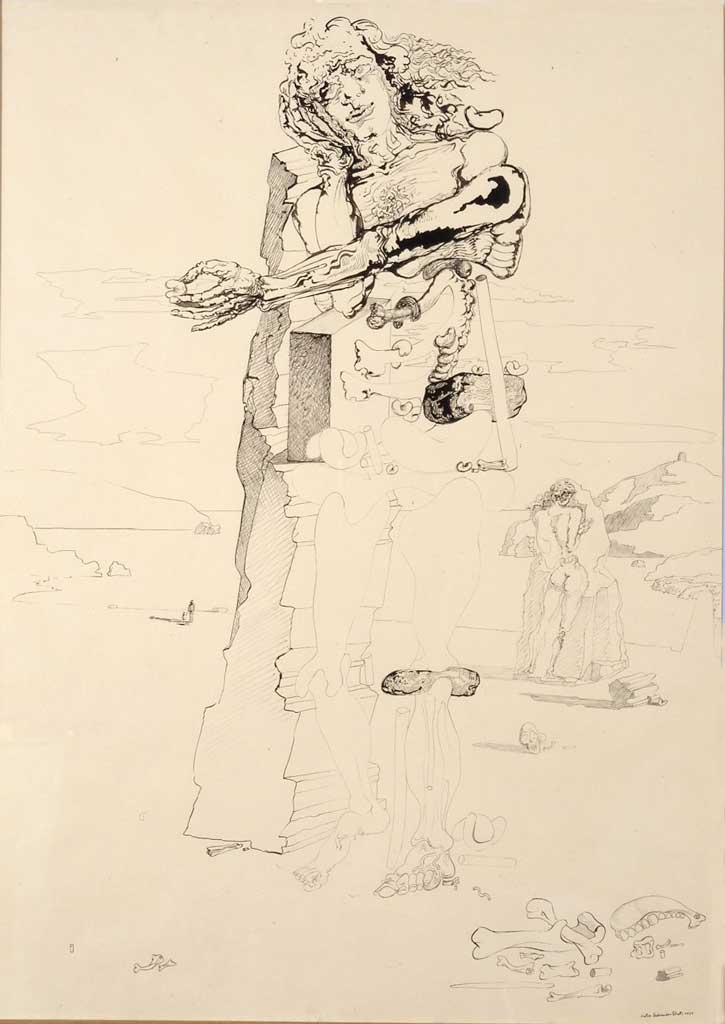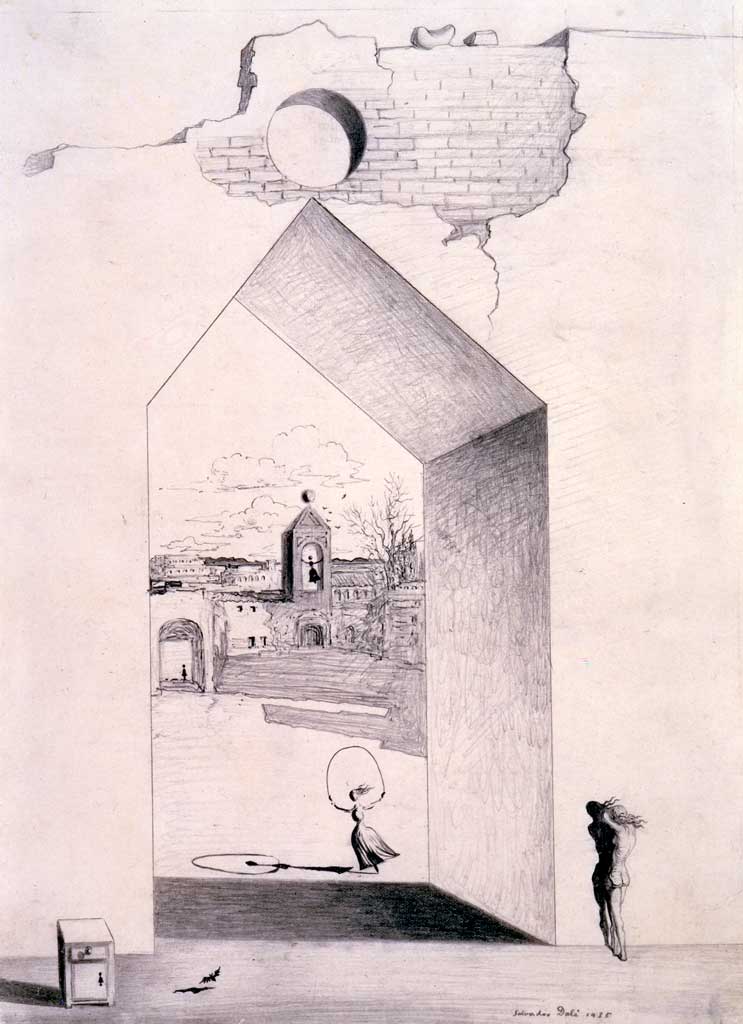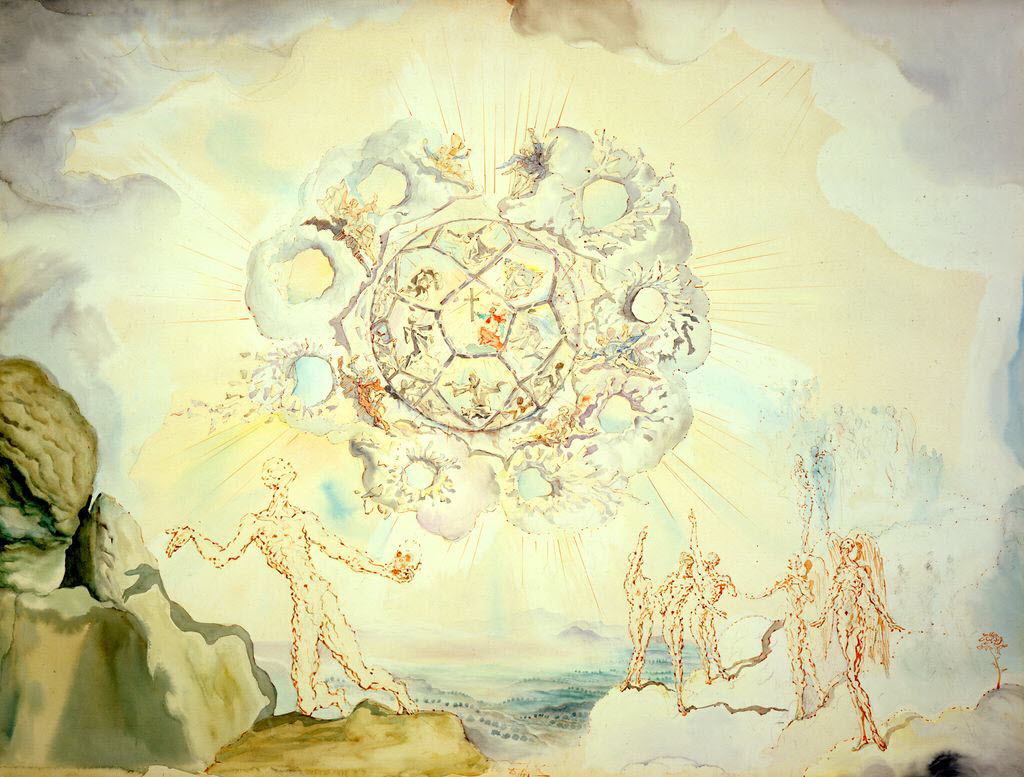From August to March 2018, we are augmenting our display of works from the permanent collection with twenty-five drawing and watercolors to complement the current retrospective of oils. These works range from 1917 to 1968, highlighting Dalí’s superior ability to draw in a variety of techniques to illuminate his complex dream imagery. Among them test:
The advanced skill of the young artist is revealed in Cadaqués (1917-18), an academic charcoal drawing of the Spanish seaside village frequented by Dalí’s family during the summers. The Santa Maria de Cadaqués Church occupying a prominent position in both the composition and the village itself. Dalí’s drawings became more sophisticated during his studies at the Real Academia de San Fernando in Madrid, where he developed a firm grasp of form, contour and proportion.
With a vivid imagination and consummate skill at drawing, Dalí was especially adept at producing numerous sketches, studies and fully realized drawings during his fertile surrealist period. In the composition of Surrealist Figure in Landscape of Port Lligat (1933), an androgynous figure is leaning against a block structure conveying an eeriness of a phantom and specter, both objects of terror to Dalí. The head seems to portray the qualities of a female with ambivalent features, while the upper torso portrays a male figure with chest hair. A bony, decomposing outstretched arm holds a small bean, and bones litter the landscape. The legs and feet are ghost like in appearance, as the figure joins the stone structure that supports it. Further in the distance, to the right is a hill with a mill tower that connects the scene to Dalí’s home in Port Lligat.
Dalí produced illustrations for books, promotional posters and newspapers beginning as a young art student. The Nostalgic Echo (1935) is actually an illustration for the frontispiece of Nuits Partagees (Shared Nights), a volume of poetry by Paul Éluard, the surrealist poet and former husband of Dalí’s wife Gala. Dalí focuses on the repeated shapes of the girl skipping rope that mimic the bell tower, and he adds the image of the nightstand with its keyhole echoed in the distant archway with figure. The use of “nostalgic” in the study title is a reference to the source image of the bell: It is from the chapel of the girls’ school that Dalí’s younger sister, Ana Maria, attended in Figueres, Spain.
These other works will be displayed in the James Gallery:
Old Man of Portdogué/El viejo del Port d’Alguer | Saltimbanques/Saltimbanquis | Two Gypsy Lads/Dos chicos gitanos | La sardana de las brujas (Sardana of the Witches) | Study for Meditation on the Harp/Estudio para Meditación en el arpa | Femme-Cheval/Femme-Cheval | Pastiche/Pastiche | Preliminary Study for the ballet Bacchanale/Estudio preliminar para el ballet Bacanal | Three Figures in Landscape and Crutches/Tres figuras en un paisaje y muletas | Study for The Three Ages/Estudio para Las tres edades | Study for The Three Ages/Estudio para Las tres edades | Study for Disappearing Images/Estudio para Imagenes invisibles | Study for Soft Watch Exploding/Estudio para Reloj blando estallando | Les Brouettes (The Wheelbarrows)/Las carretillas | Compotier et Fruits (Study for Nature Morte Vivante) | Study for Nature Morte Vivante and Skull of Zurbaran/Estudio para Nature Morte Vivante y El craneo de Zurbaran | Metamorphose Erotique/Metamorphose Erotique | Study for Galacidalacidesoxiribunucleicacid/Estudio para Galacidalacidesoxiribunucleicacid | Study for Angel in Galacidalacidesoxiribunucleicacid/Estudio de un ángel para Galacidalacidesoxiribunucleicacid | Study for The Hallucinogenic Toreador/Estudio para El torero alucinogeno | Study for The Hallucinogenic Toreador/Estudio para El torero alucinogeno
The selections on exhibit demonstrate the varying subjects that interested him at different points in his career. The Museum owns over 150 drawings and watercolors, which periodically rotate to give our visitors a continuing retrospective of Dalí’s works.
